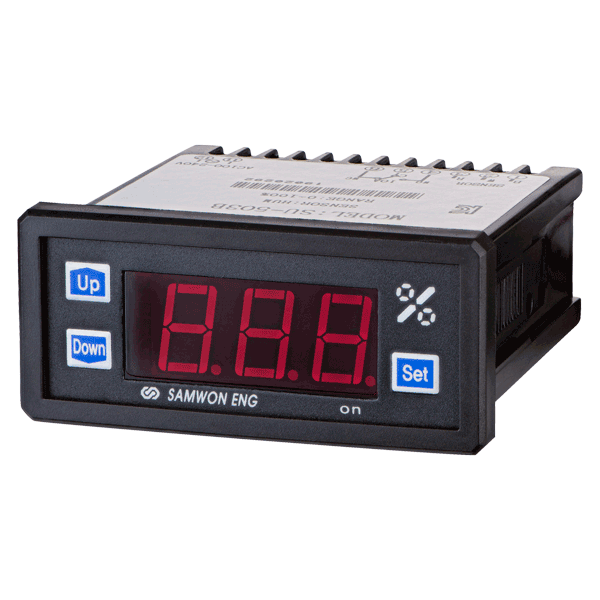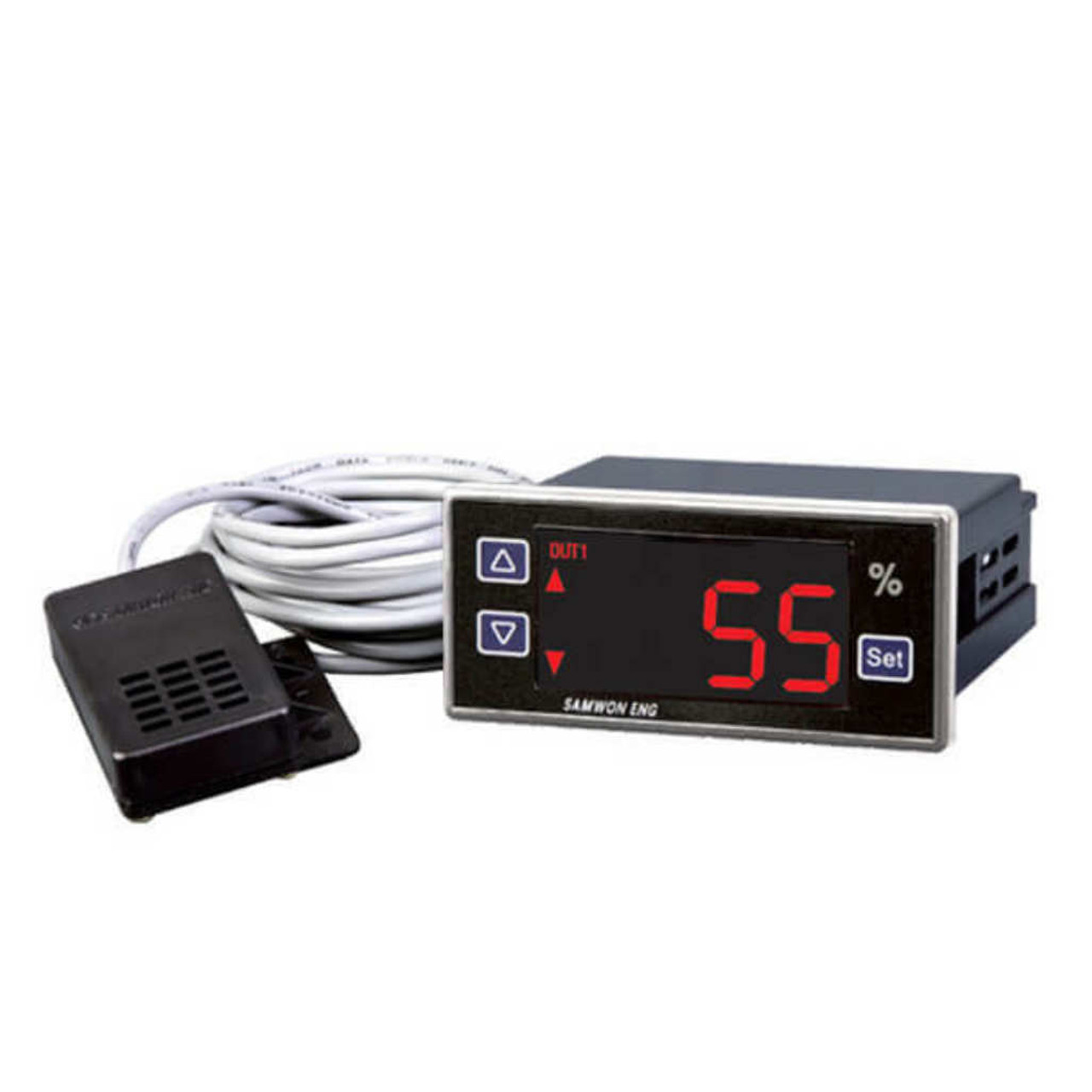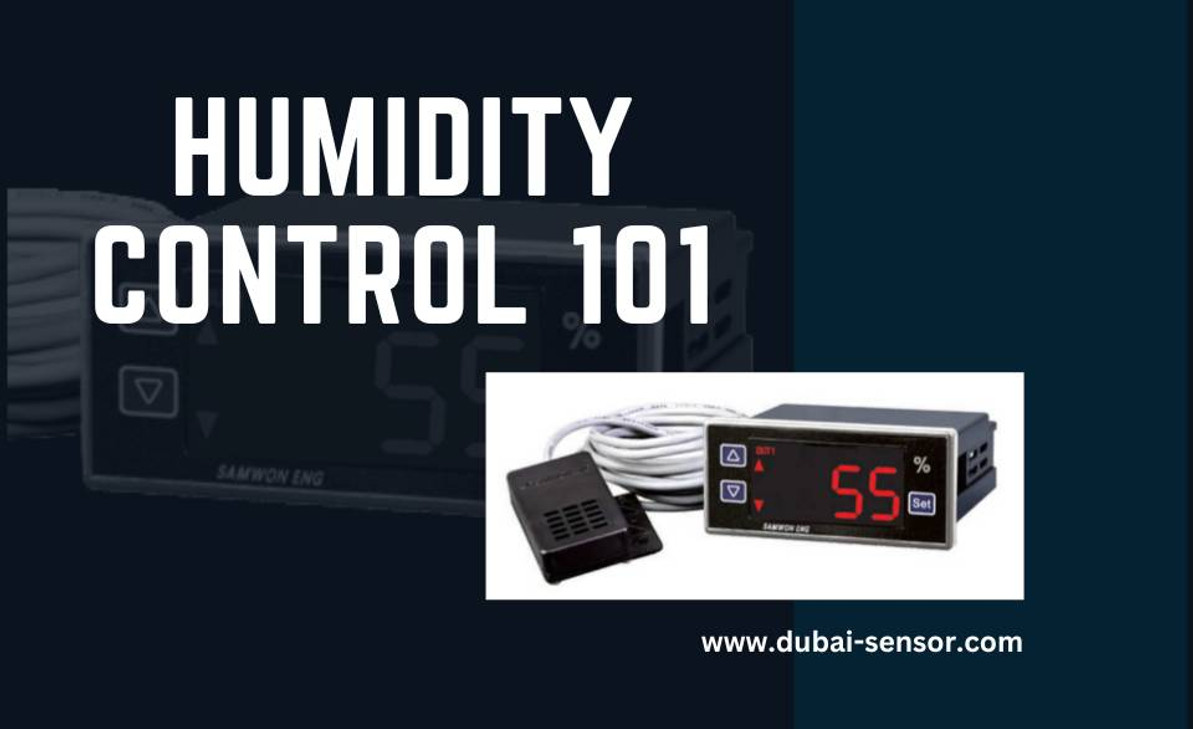Humidity control 101
Humidity is an important factor in maintaining a comfortable and healthy indoor environment. Too much humidity can lead to mold growth and damage to your home, while too little humidity can cause dry skin, respiratory issues, and other health problems. That's where a humidity controller comes in. In this article, we'll explore what a humidity controller is, how it works, and why it's an essential tool for regulating humidity levels in your home or office.
What is a humidity controller? | Humidistat
A humidity controller is a device that measures the relative humidity in a room or space and adjusts the output of a humidifier or dehumidifier accordingly to maintain a specific level of humidity. The device is designed to work with a compatible humidifier or dehumidifier and automatically regulates the moisture levels in the air to ensure that they remain within a comfortable and healthy range.
Humidity controllers come in various types and models, ranging from simple mechanical humidistats to sophisticated digital controllers. Some models offer additional features such as programmable settings, Wi-Fi connectivity, and remote access control.
Humidity controllers are widely used in residential, commercial, and industrial settings to regulate the humidity levels in different environments. They play an important role in maintaining optimal conditions for human health, preserving sensitive equipment and materials, and preventing mold and mildew growth.

Fig 1. A humidity controller that can display humidity percentage.
Watch more: Fancy discovering more about our top-selling humidity controller? Click here to check out.
Types of Humidity Controllers
There are several types of humidity controllers available, each with its own set of features and benefits. The most common types include:
Mechanical Humidity Controller
This type of humidity controller uses a mechanical mechanism to control the humidity levels. It typically consists of a dial or knob that can be adjusted to set the desired humidity level. These controllers are simple and affordable but may not be as accurate or reliable as other types. It consists of a bimetallic strip or a hygroscopic material that expands or contracts with changes in humidity. As the strip or material changes shape, it triggers a switch that turns the humidifier or dehumidifier on or off to maintain the desired humidity level.
Electronic Humidity Controller
Electronic humidity controllers use electronic sensors to measure the humidity levels and control the output of a humidifier or dehumidifier accordingly. They are more accurate and precise than mechanical humidistats and are often used in residential and commercial settings. An electronic humidistat uses a small electronic circuit to measure changes in humidity levels. It typically consists of a sensor that detects changes in humidity and sends a signal to a microcontroller, which then adjusts the output of the humidifier or dehumidifier accordingly. Electronic humidistats are more accurate than mechanical humidistats and can often be programmed to maintain specific humidity levels.
Digital Humidity Controller
Digital humidity controllers are similar to electronic ones but have a digital display that shows the current humidity level and allows for more precise adjustments. It typically includes a digital display that shows the current humidity level and allows users to set specific humidity levels and control other settings such as fan speed and operating mode. Digital humidistats may also include built-in sensors for temperature, air quality, and other environmental factors.
How does a humidity controller work?
A humidity controller works by measuring the relative humidity in a room or space and then adjusting the output of a humidifier or dehumidifier to maintain a specific level of humidity. Here's a step-by-step explanation of how it works:
1.Sensing: The humidity controller has a sensor that measures the relative humidity in the room or space. The sensor can be a mechanical, electronic, or digital device, depending on the type of humidity controller.
2.Comparison: The humidity controller compares the measured humidity level with the desired humidity level set by the user. If the measured humidity level is higher than the desired level, the humidity controller activates the dehumidifier to reduce the humidity. If the measured humidity level is lower than the desired level, the humidity controller activates the humidifier to increase the humidity.
3.Control: Once the humidity controller determines whether a humidifier or dehumidifier is needed, it sends a signal to the device to adjust its output accordingly. For example, if a dehumidifier is needed, the humidity controller will turn it on and adjust its settings to remove moisture from the air. If a humidifier is needed, the humidity controller will turn it on and adjust its settings to add moisture to the air.
4.Monitoring: The humidity controller continues to monitor the humidity levels in the room or space and adjusts the output of the humidifier or dehumidifier as needed to maintain the desired humidity level. This process continues until the humidity controller is turned off or the desired humidity level is reached.

Fig 2. A humidity controller with an humidity sensor which measures the moisture in the air.
Benefits of Using a Humidity Controller
Using a humidity controller can offer several benefits, including:
- Improved Indoor Air Quality: Maintaining the proper humidity levels can help to reduce the levels of dust, allergens, and other pollutants in the air.
- Reduced Risk of Mold and Mildew Growth: High humidity levels can create the perfect conditions for mold and mildew to grow. Using a humidity controller can help to prevent this by keeping the humidity levels in check.
- Enhanced Comfort and Well-being: Proper humidity levels can help to reduce dry skin, static electricity, and other discomforts associated with low humidity. In contrast, high humidity levels can make a room feel stuffy and uncomfortable.
- Energy Savings: By maintaining the proper humidity levels, a humidity controller can help to reduce the workload of your HVAC system, resulting in energy savings.
- Increased Productivity and Efficiency in Commercial Settings: Maintaining proper humidity levels can help to increase the comfort and well-being of employees, which can lead to increased productivity and efficiency in the workplace.
Factors to Consider When Choosing a Humidity Controller
When choosing a humidity controller, there are several factors to consider, including:
- Accuracy and Reliability: Look for a controller that is accurate and reliable in measuring and maintaining humidity levels.
- Ease of Installation and Use: Consider how easy the controller is to install and use. Some controllers may require professional installation, while others can be easily installed by the homeowner.
- Maintenance Requirements: Check the maintenance requirements of the controller, such as cleaning or replacing filters, to ensure that it is easy to maintain and keep in good working order.
- Cost and Affordability: Look for a controller that is within your budget and offers good value for the price.
Applications of humidity control
The applications of humidity controllers in different fields are very wide, some of them are mentioned below:
Greenhouses
The growth and development of plants depend on environmental conditions. Different plants need different temperatures and humidity to grow and flourish. Having an advanced humidity controller and a proper fogging system, greenhouses can maintain the temperature and humidity in different areas allowing all types of plants to grow in the same environmental conditions
HVAC Systems
Humidity controllers are essential in greenhouses to regulate the humidity levels needed for optimal plant growth. Plants require specific levels of humidity to thrive, and humidity controllers help maintain these levels by controlling the output of misting systems, humidifiers, or ventilation. Humidity controllers can help prevent issues such as plant dehydration, mold growth, and pest infestations.
Museums and Archives
Humidity controllers are used in museums and archives to protect artwork, documents, and other sensitive materials from damage caused by high or low humidity levels. These materials are susceptible to damage caused by fluctuations in humidity, such as warping, cracking, and fading. Humidity controllers can help maintain stable and controlled humidity levels, preventing these issues and preserving the integrity of these materials.
Supermarkets and Grocery Stores
Foods need a certain temperature and humidity based on their storage conditions, the humidity controller can institutionalize the importance of proper temperature and humidity in stores and supermarkets. Because fruits and vegetables are mainly composed of water. Using the wrong system can cause the product to dry or deteriorate. The use of humidity control systems keeps the products at the optimal temperature in terms of health and safety.
Textile Industry
Humidity controllers are commonly used in textile manufacturing to regulate humidity levels during processing and storage. Textile fibers can be affected by changes in humidity, leading to shrinkage, stretching, and other deformations. Humidity controllers help prevent these issues and ensure consistent product quality.
Animal Husbandry (Chicken Coops and Poultry Farming)
The living conditions of chickens are completely different from humans, maintaining the balance between temperature and humidity is one of the important factors in keeping chickens, and the humidity and temperature controller is well able to maintain this balance.
Food and Beverage Production
Humidity controllers are widely used in the food and beverage industry to regulate humidity levels during processing and storage. For example, bakeries use humidity controllers to prevent bread from drying out, while breweries use them to maintain optimal conditions for fermentation. Humidity controllers can help prevent spoilage, improve product quality, and ensure food safety.
Pharmaceuticals
Humidity controllers are widely used in pharmaceutical manufacturing to maintain the ideal humidity levels for drug production and storage. Drugs can be sensitive to changes in humidity, which can affect their stability and potency. Humidity controllers help ensure product quality and stability, which is critical for pharmaceutical safety and efficacy
Laboratories
Humidity controllers are essential in laboratories to maintain stable and controlled humidity levels for experiments and testing. Humidity levels can affect the accuracy and reliability of results, so humidity controllers help ensure consistency and prevent contamination or damage to equipment.
Printing Industry
Humidity controllers are used in the printing industry to regulate humidity levels during printing and paper handling. High humidity levels can cause paper to curl or wrinkle, leading to printing problems such as jams and ink smudging. Humidity controllers help prevent these issues and ensure consistent printing quality.
Swimming Pools and Spas
Humidity controllers are essential in indoor swimming pools and spas to regulate humidity levels and prevent damage to building materials and equipment. High humidity levels can cause corrosion and decay, leading to structural damage and equipment failure. Humidity controllers help maintain optimal humidity levels, preventing these issues and ensuring safe and comfortable swimming conditions.
Conclusion
Humidity controllers are important devices that can help to maintain proper humidity levels and improve indoor air quality, comfort, and well-being. When choosing a humidity controller, it's important to consider factors such as accuracy, compatibility, ease of use, maintenance requirements, and cost. By selecting the right humidity controller for your needs, you can enjoy the benefits of improved indoor air quality and energy savings, while also enhancing the comfort and productivity of your home or workplace.
Recent Posts
-
Booster Pump Troubleshooting and Maintenance: How to Fix and Prevent Common Issues
1. Introduction Imagine turning on your faucet only to be greeted with a weak trickle of water when …22nd Apr 2025 -
Energy-Efficient Booster Pumps: Selection and Tips for Maximizing Performance
1. Introduction Imagine never having to deal with fluctuating water pressure, noisy pumps, or skyroc …19th Apr 2025 -
Booster Pumps for Sustainable Water Systems: Irrigation and Rainwater Harvesting Solutions
1. Introduction Water scarcity is no longer a distant threat—it’s a reality affecting millions …16th Apr 2025




